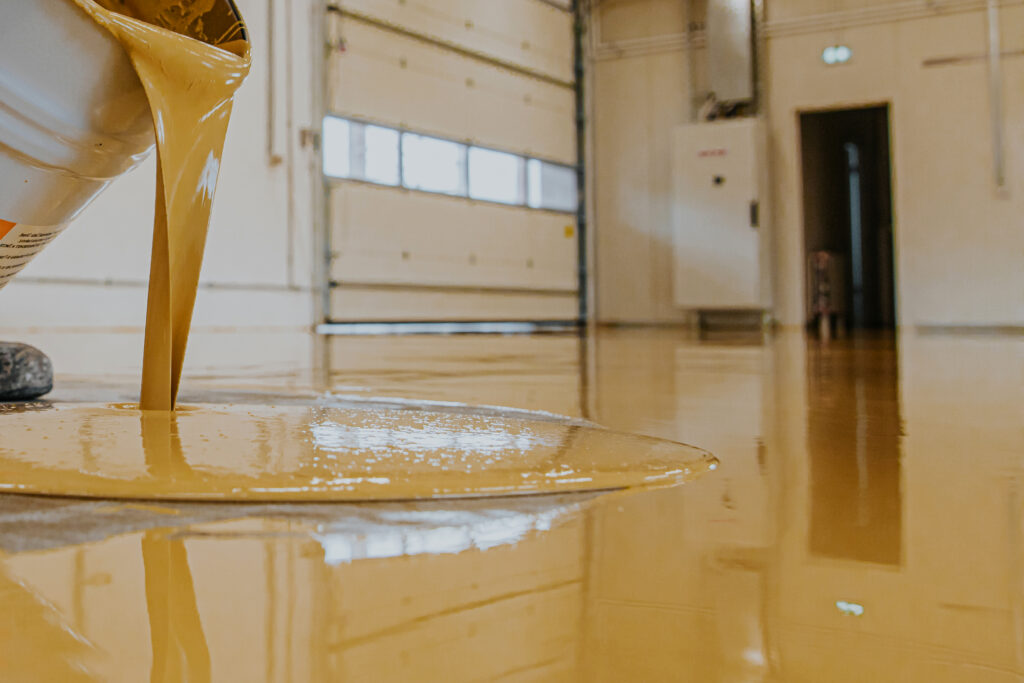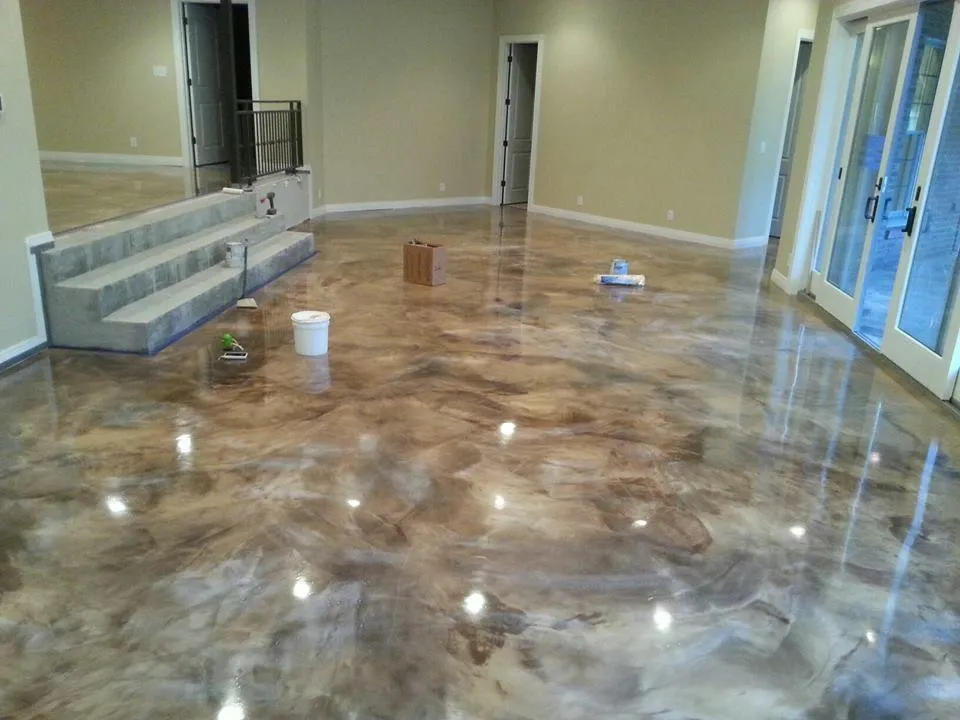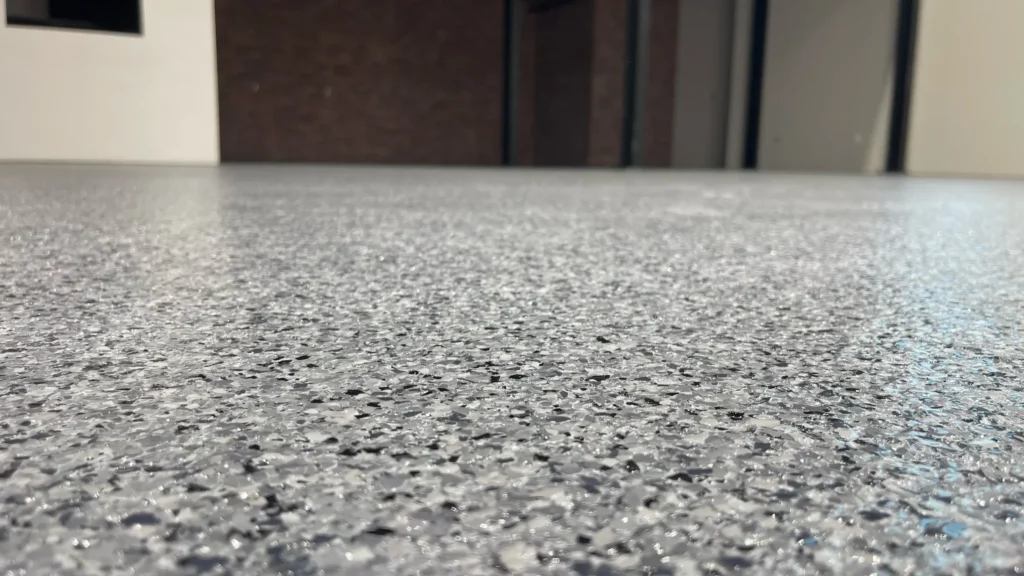The Pacific Guard Process
What its like to work with us
1. Choosing Your Coating
The process begins with a free consultation where we discuss your needs, your budget, and the best coating option for your garage, business, or facility. You’ll choose between:
- Epoxy Coatings – Durable and cost-effective with a variety of finishes.
- Polyaspartic Coatings – Faster curing, UV-resistant, and highly durable.
We’ll explain the benefits of each so you can make the best choice for your space.

2. Selecting Your Color & Design
Once you’ve chosen the base coating, it’s time to customize the look:
- Flake/Chip Blends – Decorative flakes are added for texture and slip resistance.
- Metallic Finishes – Swirling metallic effects for a high-end, modern look.
- Solid Colors – A smooth, uniform appearance in various shades.
We provide samples so you can visualize the final result in your space.









3. Choosing the Topcoat & Finish
The final layer determines the surface feel and protection level. We offer:
- Glossy or Matte Finish – Choose a sleek shine or a subtle, low-sheen look.
- Water-Based Topcoat – Provides durability and determines smoothness or texture.
Our team will guide you through the best option based on your usage needs.

Get a free quote
questions / answers
checkout Frequently asked questions
How many layers of epoxy coating is best?
A polyaspartic coating is a type of floor coating designed to protect concrete surfaces from damage, stains, and wear. It’s often used in garages, warehouses, and commercial spaces because it creates a durable, long-lasting surface that resists cracking, peeling, and discoloration.
Will my house smell like chemicals?
Some coatings may produce a noticeable smell or fumes for 3 days to a week, depending on the type of coating used. Polyaspartic coatings typically have a milder odor than epoxy, but both can release fumes during the curing process.
To minimize any lingering smell, we highly recommend keeping the area well-ventilated for as long as possible. Opening doors, windows, and using fans can help air out the space more quickly. If you are sensitive to odors, it may be best to avoid spending extended time in the area until the fumes fully dissipate.
What is a polyaspartic coating?
A polyaspartic coating is a type of floor coating designed to protect concrete surfaces from damage, stains, and wear. It’s often used in garages, warehouses, and commercial spaces because it creates a durable, long-lasting surface that resists cracking, peeling, and discoloration.
How is polyaspartic different from epoxy?
Polyaspartic and epoxy are both popular choices for floor coatings, but they have some key differences:
- Drying time: Polyaspartic dries much faster, usually within 30 minutes to an hour, while epoxy can take days to cure fully.
- Durability: Polyaspartic coatings bond better with concrete, making them less likely to peel or chip over time.
- UV resistance: Unlike epoxy, polyaspartic won’t turn yellow or fade when exposed to sunlight.
- Flexibility: Polyaspartic is more flexible than epoxy, meaning it can handle slight movements in the concrete without cracking.
How long does polyaspartic take to dry?
One of the biggest advantages of polyaspartic coatings is their fast drying time. Most formulas dry in about 30 minutes to an hour after application. You can walk on the floor within five hours and park a car on it within 24 hours. This makes it a great option for busy spaces where downtime needs to be minimal.
Is polyaspartic better than epoxy?
It depends on what you need. If you want a floor coating that dries quickly, resists UV damage, and lasts a long time without peeling, polyaspartic is the better choice. However, epoxy might be more suitable for situations where a longer application time is acceptable, or if cost is a major factor.
Where can I use polyaspartic coatings?
Polyaspartic coatings are great for:
- Garage floors – They protect against stains from oil, chemicals, and tire marks.
- Basements – A strong, moisture-resistant option for concrete floors.
- Commercial spaces – Ideal for showrooms, warehouses, and industrial floors.
- Outdoor areas – Because they resist UV damage, polyaspartic coatings work well for patios and driveways.
Will polyaspartic coatings crack over time?
No, they are designed to be flexible and move slightly with the concrete, reducing the chance of cracks. This is a key advantage over epoxy, which can become brittle and crack over time.
Are polyaspartic coatings safe?
Yes! Once fully cured, polyaspartic coatings are non-toxic and low in odor. Some formulas even have low or zero VOCs (volatile organic compounds), making them a safer choice for indoor applications.
